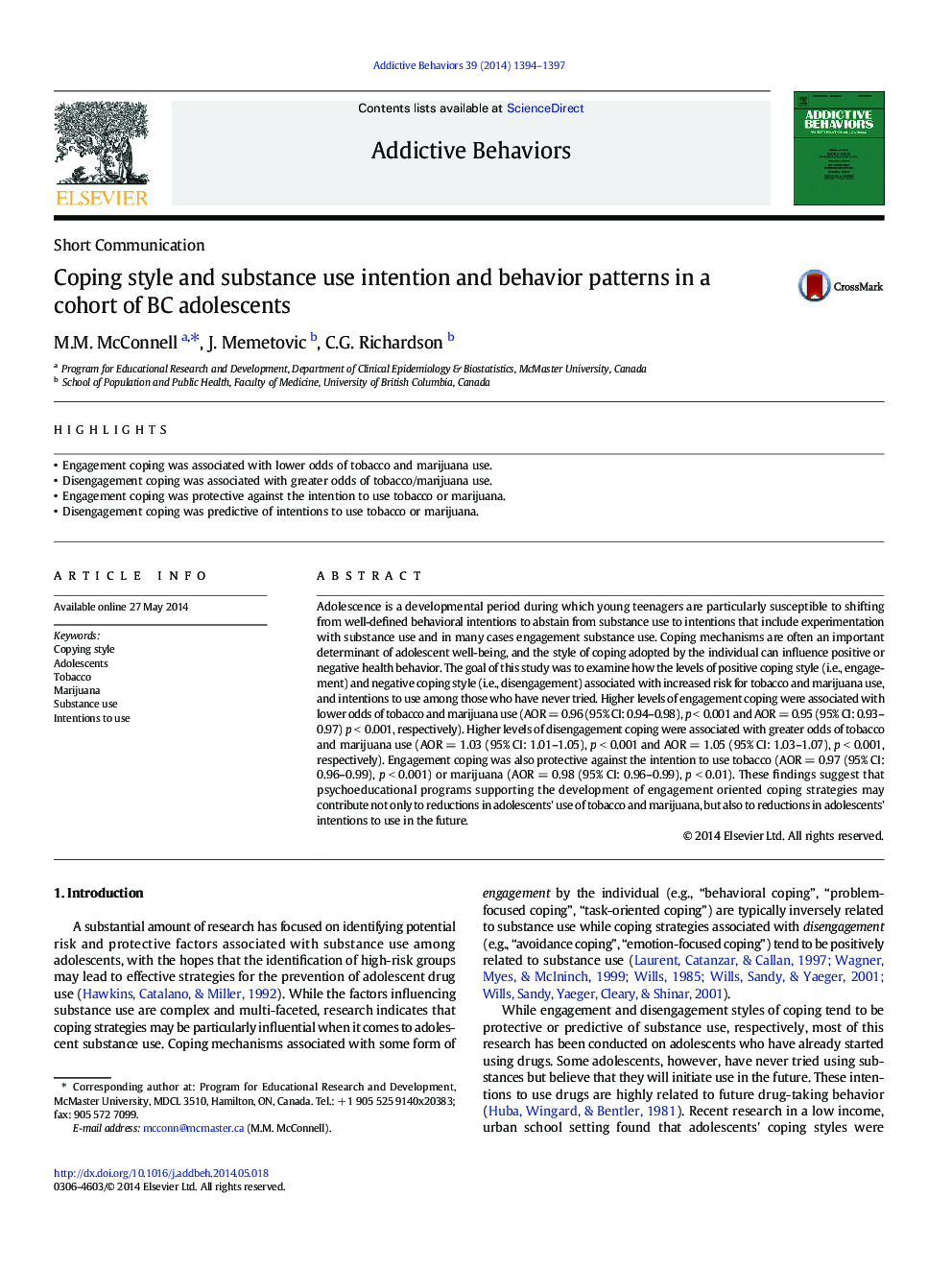| کد مقاله | کد نشریه | سال انتشار | مقاله انگلیسی | نسخه تمام متن |
|---|---|---|---|---|
| 898934 | 915350 | 2014 | 4 صفحه PDF | دانلود رایگان |
• Engagement coping was associated with lower odds of tobacco and marijuana use.
• Disengagement coping was associated with greater odds of tobacco/marijuana use.
• Engagement coping was protective against the intention to use tobacco or marijuana.
• Disengagement coping was predictive of intentions to use tobacco or marijuana.
Adolescence is a developmental period during which young teenagers are particularly susceptible to shifting from well-defined behavioral intentions to abstain from substance use to intentions that include experimentation with substance use and in many cases engagement substance use. Coping mechanisms are often an important determinant of adolescent well-being, and the style of coping adopted by the individual can influence positive or negative health behavior. The goal of this study was to examine how the levels of positive coping style (i.e., engagement) and negative coping style (i.e., disengagement) associated with increased risk for tobacco and marijuana use, and intentions to use among those who have never tried. Higher levels of engagement coping were associated with lower odds of tobacco and marijuana use (AOR = 0.96 (95% CI: 0.94–0.98), p < 0.001 and AOR = 0.95 (95% CI: 0.93–0.97) p < 0.001, respectively). Higher levels of disengagement coping were associated with greater odds of tobacco and marijuana use (AOR = 1.03 (95% CI: 1.01–1.05), p < 0.001 and AOR = 1.05 (95% CI: 1.03–1.07), p < 0.001, respectively). Engagement coping was also protective against the intention to use tobacco (AOR = 0.97 (95% CI: 0.96–0.99), p < 0.001) or marijuana (AOR = 0.98 (95% CI: 0.96–0.99), p < 0.01). These findings suggest that psychoeducational programs supporting the development of engagement oriented coping strategies may contribute not only to reductions in adolescents' use of tobacco and marijuana, but also to reductions in adolescents' intentions to use in the future.
Journal: Addictive Behaviors - Volume 39, Issue 10, October 2014, Pages 1394–1397
